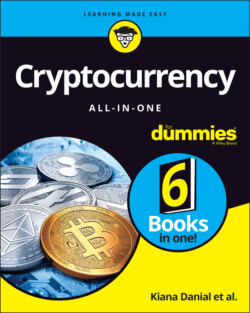Читать книгу Cryptocurrency All-in-One For Dummies - Peter Kent, Kiana Danial - Страница 175
Moving money faster: Across borders and more
ОглавлениеIt is difficult to assess the transaction volume that needs to be met by a blockchain handling the currency of an economy like that of the U.K. or U.S. The U.S. alone is processing billions of transactions a day and over $17 trillion in value a year. That’s a lot of responsibility for a new technology! The nation would be crippled if its monetary supply were compromised.
The International Monetary Fund, the World Bank, the Bank for International Settlements, and central bankers from all over the world have met to discuss blockchain technology. The first step toward faster and cheaper money would be adopting a blockchain as the protocol to facilitate bank transfers and interbank settlement. Official digital currencies that ordinary citizens use on a daily basis would come much later.
Individual consumers wouldn’t directly feel the cost reduction from utilizing a blockchain for interbank settlement. The savings would be seen in the bank’s bottom line as cost reductions for fees charged by intermediaries.
Consumers will still want retail locations and commercial banks for the foreseeable future. But millennials have already adopted app-activated payments through PayPal, Venmo, Cash, and more. A new way of paying through their phones won’t faze them.
The great challenge is that if all money is digital, compromising it could be catastrophic. It’s possible that the architecture of blockchain systems could be strong enough. Instead, the issue might be that the code within the system is executed in an unexpected manner, as happened in the decentralized autonomous organization (DAO) hack on Ethereum (see Chapter 5 of this minibook). If the cryptocurrency were operating on a traditional public blockchain, then 51 percent of the nodes in the network would have to agree to fix the issue. Getting an agreement in place might take a lot of time, and it wouldn’t be practical for businesses and people who need stable and secure money at all times.
Many blockchains operate as democracies. A majority (51 percent) of a blockchain’s nodes network is needed to make a change.
